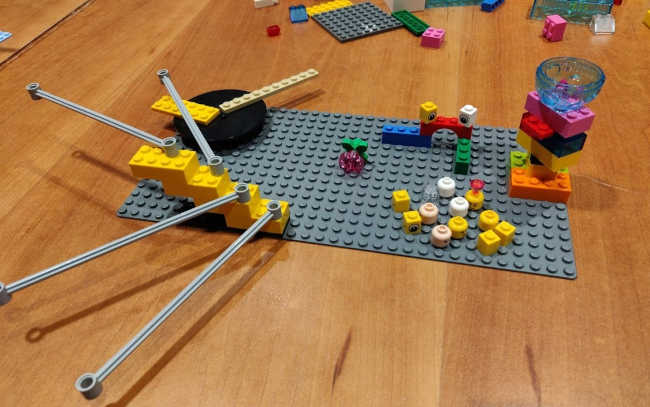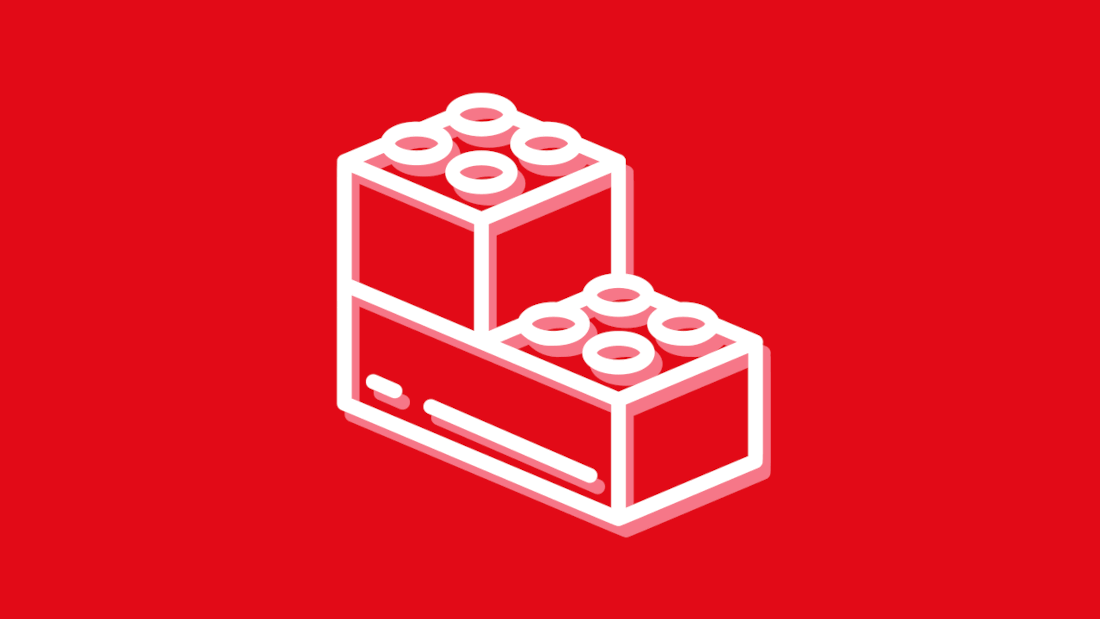How do you get people engaged with project retrospectives? One trick is to employ a tool that gets everybody excited – Lego!
Lego? At work? Are you serious? Well, these days, Lego is not just child’s play.
It can be used in workshops to help people share ideas and concepts with each other. It helps us loosen up, use our brains differently, and communicate.
I’m a big fan of one particular framework for using Lego in a project context – Lego Serious Play (LSP).
What is Lego Serious Play?
LSP (or LEGO® SERIOUS PLAY® as they prefer it) is a methodology that contains a series of predefined exercises.
The LSP exercises can be used in workshops to facilitate thinking, communication and problem solving.
LSP draws on extensive research from the fields of business, organisational development, psychology and education, and is based on the concept of ‘hand knowledge’.
The idea is that when people focus on building something and ‘thinking with their hands’ they unlock specific parts of their brain and activate knowledge that they would not otherwise be able to access.
Words are great, but they’re not the only tool in the box.

What is the skills building framework?
The skills building framework is the exercise that starts most LSP workshops.
It’s a good idea to start here because it...
- Helps participants get familiar with Lego bricks and how to put them together.
- Introduces metaphorical building and the notion that LEGO bricks can have specific meaning and convey ideas that are different from any pre-existing meaning (for example, a red brick can signal danger or symbolise a flower).
- Builds engagement with the technique, especially with colleagues who are sceptical about this method, by letting them experience ‘hand knowledge’ at work.
- Defines rules, such as the importance of listening, because the model only has the meaning shared by the person who built it; the builder has the responsibility to share the meaning of the model; and the rest of the group have the responsibility to respect it, questioning only specifics that were not clear to them, without judgement.
As with all LSP exercises, the skills building framework is based on research and is designed to get people comfortable with the process, one step at a time.
The sequence is:
- Build a tower – get team members familiar with bricks and telling a story about their model.
- Build a model from instructions – get team members confident with bricks by giving them chance to look at a model and recreate it.
- Modify the model to show a concept or idea – introduce the idea of metaphorical construction and get the group in the habit of listening to others’ meanings for each brick.
- Build a model from scratch to share a concept or idea – build on the concept of storytelling with the full freedom to build whatever model they want.
Why this works for sprint retrospectives
At scrum.org, “the home of Scrum”, a sprint retrospective is defined as follows:
The Sprint Retrospective concludes the Sprint… During the Sprint Retrospective, the team discusses:
- What went well in the Sprint?
- What could be improved?
- What will we commit to improve in the next Sprint?
The sprint retrospective, or ‘retro’, needs to be a safe space.
Every member of the scrum team needs to feel free to share their challenges and their highlights from the sprint.
“What went well?” and “What can be improved?” are questions often asked by those facilitating retro workshops.
During the retro, each scrum team member needs to own their space, and all the other team members need to respect their views.
In this context, Lego serious play, by its very nature, creates the perfect environment.
It encourages people to pay full attention to each participant, or else they’ll struggle to understand the model on their own.
And don’t underestimate the power of Lego’s ability to takes us back to childhood, creating a relaxed environment and putting people in a positive mindset.
Try it out on your next retro
Map each of the exercises of the LSP skills building framework to the goals or activities of the sprint retrospective:
- Build a tower to get people warmed up.
- Build a model from instructions. (This is just fun!)
- Modify the model to show what went well during this sprint.
- Build a model from scratch to show what needs to be improved for next sprint.
The next question is how to capture the commitment for the next sprint. And the answer is, vote!
Use bricks to vote on what everyone agrees need improving for next sprint.
Then, finally, create a combined model.
Get everyone to work together to show what they commit to changing next sprint by adding the most important parts of each person’s individual models to create a shared story.
This also represents an expansion of the skills building framework, into the next stage of LSP.
Let SPARCK bring your workshops to life
Lego serious play is just one of the many tools we have for helping teams unlock their shared knowledge.
Get in touch to explore what might work for you, your team and your project.



